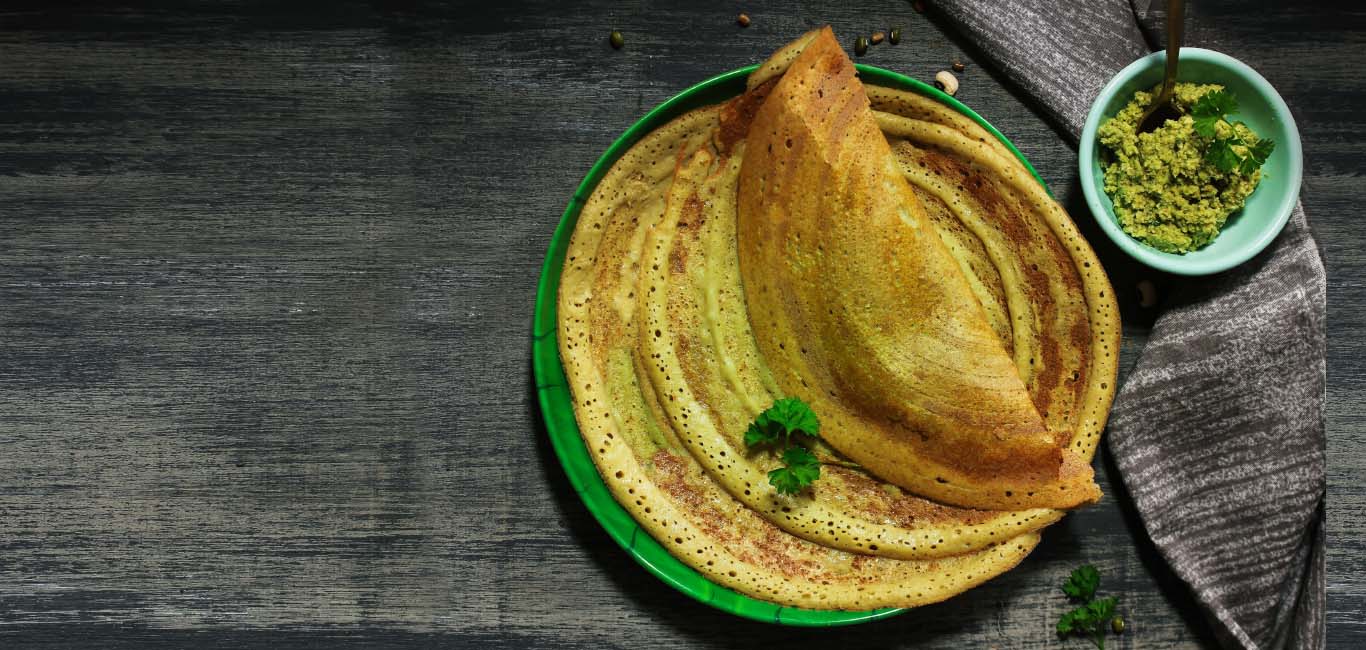
It is common knowledge that if one eats a healthy breakfast, one’s day goes well as breakfast is considered the most important meal of the day. Happiest Health brings you a recipe originating from Andhra Pradesh, India, popularly called pesarattu (green gram dosa).
Harnessing the power of good old green gram
The main ingredient of this recipe is green gram or mung bean. Green gram is known for its nutritional value. Ranjani Raman, nutritionist from Nutrition Tattva, (a team of nutritional consultants catering customised nutritional recommendations), Bengaluru, tells Happiest Health that green gram is a good source of protein, fibres, and micronutrients such as iron, magnesium, zinc, and vitamin B that help in maintaining metabolism.
Health benefits of green gram
It has antioxidant and anti-inflammatory properties and keeps us full for a long time.
“Protein and carbs are macronutrients that are essential to kick start the day and any breakfast made out of green gram can be extremely nutritious and healthy,” says Raman.
Green gram is a pulse, that has a few antinutrients such as lectins and tannins that may affect or impede the absorption process of essential nutrients in the gut. Raman recommends avoiding green gram in the raw form. It is recommended to soak, germinate, ferment, and cook to reduce their ill effects. By doing so, its digestibility also enhances.
Read more about the goodness of soaking pulses before cooking them here
About the recipe
Pesarattu is a variation of regular dosa, a thin pancake made from fermented batter (a combination of rice and lentils). The best part of the recipe is that it requires a minimal number of ingredients and the cooking time is less. It is served with a combination of coconut chutney (a spread) or upma (porridge made using dry-roasted semolina).
Raman says that since the preparation method involves soaking and fermentation processes, the bioavailability of nutrients enhances.
“It can be a good option for post-workout high protein breakfast,” adds Raman.
Recipe by Jayashree T Rao, food blogger and recipe developer from Ballari district in Karnataka
Cooking time: 15 minutes
Serves: 2-3 (7-8 dosas)
Ingredients:
- 1 cup mung bean
- 2 green chillies
- 1 cube ginger (1 inch)
- Salt
- 150ml water
- Finely chopped onion and coriander leaves (optional)
Instructions:
For the batter
- Soak mung bean for four to six hours
- Grind the soaked pulses with a cube of ginger, two green chilies, and water, to a smooth paste
- Transfer the batter into a bowl
For the dosa
- Heat the dosa pan for about five to seven minutes on a medium flame
- Adjust the consistency of the batter by adding water
- Sprinkle a few drops of ghee or oil on the pan to prevent the batter from sticking to the pan (do not use oil if using a non-stick pan)
- Take a spoonful of batter, pour it to the pan and spread it evenly into a layer (use the same spoon to move from the centre to the edges in a circular motion)
- Sprinkle finely chopped onion and coriander over it (optional)
- Let the dosa cook well. Once it is ready, the edges start separating from the pan
- Now, flip the dosa and let it cook
- Once it is cooked, fold it and serve it with a chutney of your choice (coconut, peanut, garlic, ginger or pickle)
Here are a few pro tips from recipe developer Jayashree
- Soak the mung overnight for better dosas
- The batter should be thick
- Dosa is best made with fresh batter
Nutritional value of mung dosa
(Value corresponds to 1 cup mung that weighs approximately 200g)
- Total calorie: 766.26Kcal
- Carbohydrate: 140.11g
- Fibre: 34.67g
- Protein: 50.43g
- Fat: 2.8g
- Sodium: 6.89mg
- Potassium: 2767.18mg
- Iron: 14.46mcg
- Carotenoids: 1362.14mcg
(Nutritional value provided by in-house Nutritionist Shohini Basu)
















